Whenever there’s party, I love to bring jelly. Probably because for the longest time I didn’t have a stand mixer, so there’s not much dessert that I could make except for fruit skewers and jellies. But even after I got a stand mixer, I still make more jellies than cakes.
Due to the fact that I’m rather health conscious, I prefer to include some fruits or herbs in my dessert especially if the dessert is made out of wheat and sugar. Whenever I can, I choose dessert made from nutritious ingredients like black glutinous rice in bubur pulut hitam or agar-agar to make jellies. Do you know that agar-agar came from algae? Normally, I like to make konnyaku jelly like osmanthus jelly with goji berries.
I also really like the taste of jelly from pasar ramadan – those made with gula melaka and santan (coconut milk). Perhaps I especially like it because it’s like a treat to me and reminds me of one of my favourite festivals.
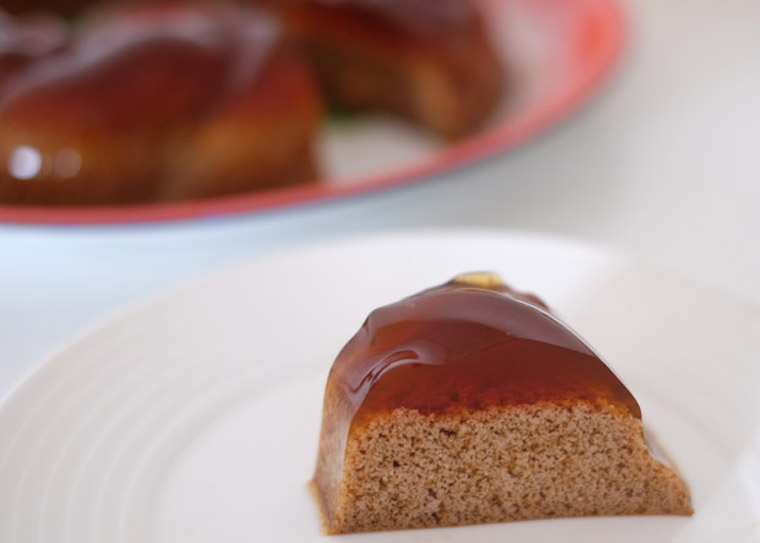
Gula melaka (palm sugar) and santan (coconut milk) both carries distinct taste and immense fragrance incomparable to regular sugar and milk. Combined with pandan leaves, the taste and aroma is heavenly. This particular dessert, when made properly, will separate into two beautiful layers – a clear caramel-coloured top and cloudier light brown bottom.
Recently, I learned to make it at home with a beautiful vintage jelly mould. Aunty Mani who is very good at making Malay cuisine, taught me how and gave the vintage mould to me and I was ecstatic (I love old kitchenware!). She often make jelly for family gatherings too. This recipe is one of those I’ve tasted and loved.
TOOLS
- Jelly mould / baking tray
- Pot + spatula
- Bowl and fork (to whisk egg)
RECIPE CARD
Gula Melaka Agar-Agar
Ingredients
- 1 packet (10 g) Agar-agar powder
- 1 L (4 cups) Water
- 250 g Gula melaka
- 200 ml Coconut milk
- 1 Egg, whisked
- 1 pinch of Salt
- 4 Pandan leaves, washed and tied into knot
Directions
- Step 1 PREP: Break egg into a bowl and whisk well. Lightly tear pandan leaves and tied it into a knot.
- Step 2 MAKE PALM SUGAR SYRUP: Add 1 L of water, gula melaka and pandan leaves into a pot. Boil on medium fire until sugar is completely dissolved. Remember to close with a lid so water does not evaporate too much (5 – 8 minutes).
- Step 3 ADD COCONUT MILK & SALT: Remove lid and pandan leaves, add agar-agar. Mix well to dissolve (1 minute). Add coconut milk and salt. Mix well to dissolve (1 minute).
- Step 4 ADD IN EGG: Add whisked egg. Quickly stir so that it’ll mix well (1 minute). Turn fire on high and let the solution bubble violently for a minute. Stir well with a spatula until solution is cooked and well combined (3 minutes).
- Step 5 POUR SOLUTION INTO MOULD: Pour agar-agar solution into a jelly mould or baking tray. Let it cool (about 1 hour) and pop it in the fridge to harden (I left mine overnight).
- Step 6 SLICE TO SERVE: Gently remove agar-agar from the mould and place it in a large tray or plate. Use your fingers to loosen the sides of the jelly. It should be easily removed after that. Slice and serve chilled.
SHORT RECIPE
Boil 1 L water + 250 gula melaka + pandan leaves until sugar is completely dissolve.Remove leaves. Add agar-agar powder + coconut milk + salt. Mix well. Add whisked egg & stir quickly to mix. Boil solution until it bubbles. Pour solution into mould. Let it cool & chill in the fridge to set.
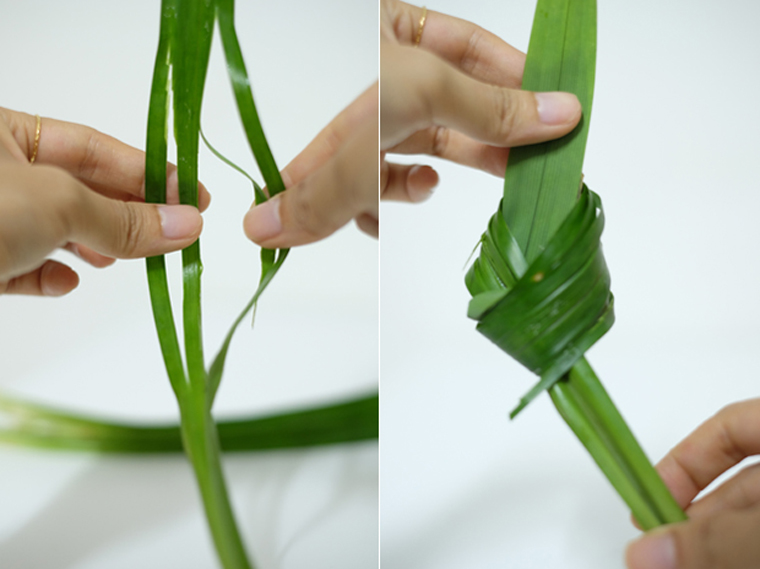
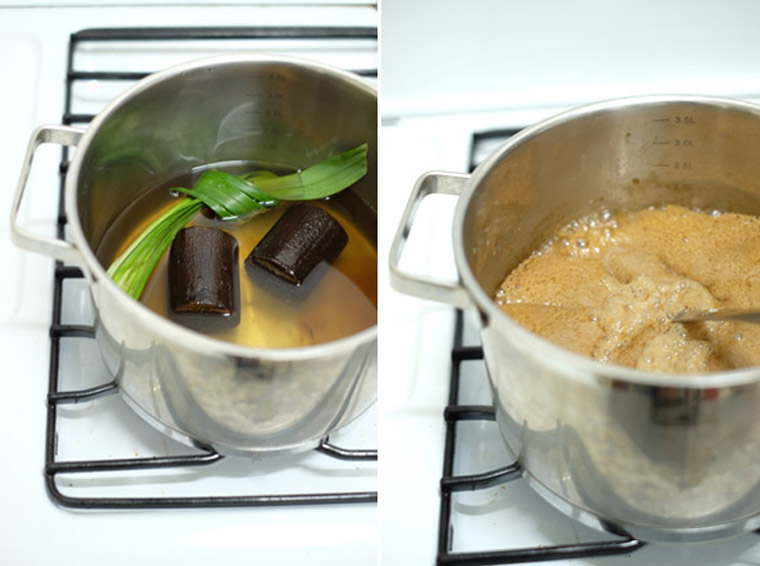
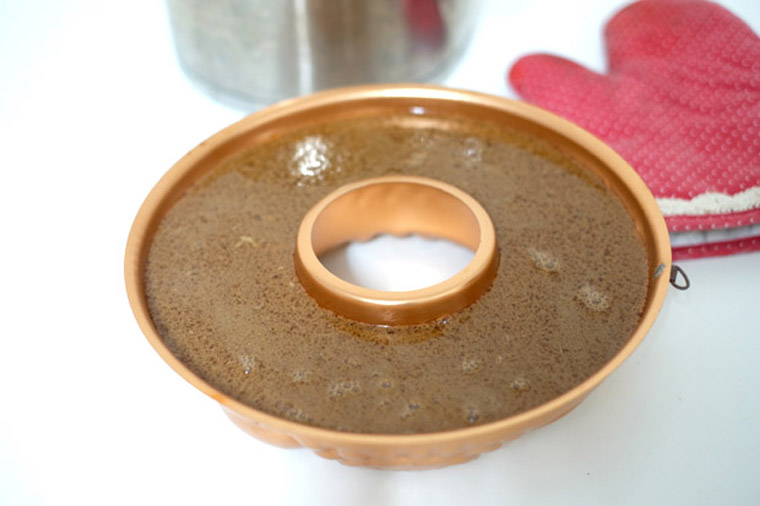

COOKING TIPS
- *If successful, this jelly produces two beautiful layers. The key is to ensure that the solution bubbles at the end of cooking. Perhaps, when the santan and egg is properly cook and turned more solid – it will sink to the bottom of the mould hence creating the beautiful layers.
- I love the fragrance of pandan leaves. To make sure more of the flavour and scent is melded into the solution, I always lightly tear pandan leaves. When it’s slightly bruised and more surface area is exposed, it’ll impart more of its goodness into the agar-agar solution.
- For this recipe, I think it’s very important to get good quality gula melaka (palm sugar). I got mine from a sundry shop in Melaka. It’s was slightly more expensive, but I could smell the obvious difference between it and the less expensive one.
- You can reduce the amount of gula melaka if you like it less sweet. I am only putting 500 g because the blocks amounts to that. However, if you do so, the top brown layer will be thinner and it may not look as pretty.
- For a more formal party where people are properly seated, I think it’s best to make jelly in a beautiful mould. However, if you’re taking it for picnics and/or serving many people, pour jelly into a shallow baking tray so that you can cut it into smaller pieces. I managed to cut into 35 decent pieces.
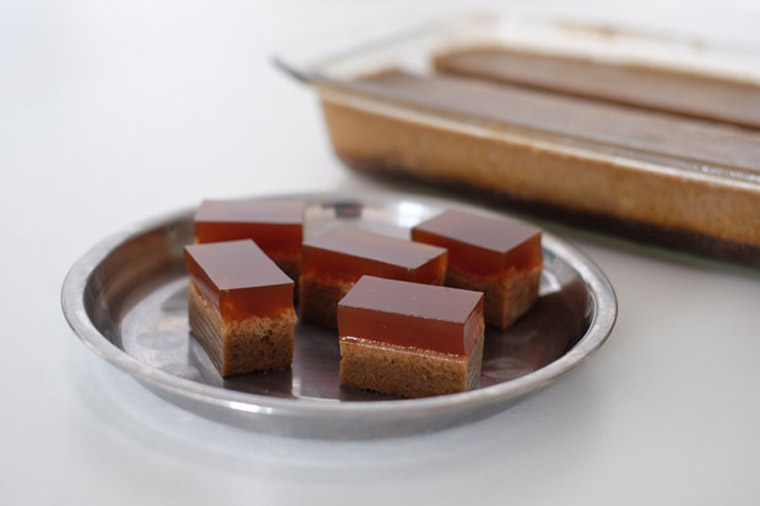
This jelly is not just delicious but beautiful. I love the caramel colour and the interesting layers. I think it’s a perfect dessert to serve at parties.
Enjoy!

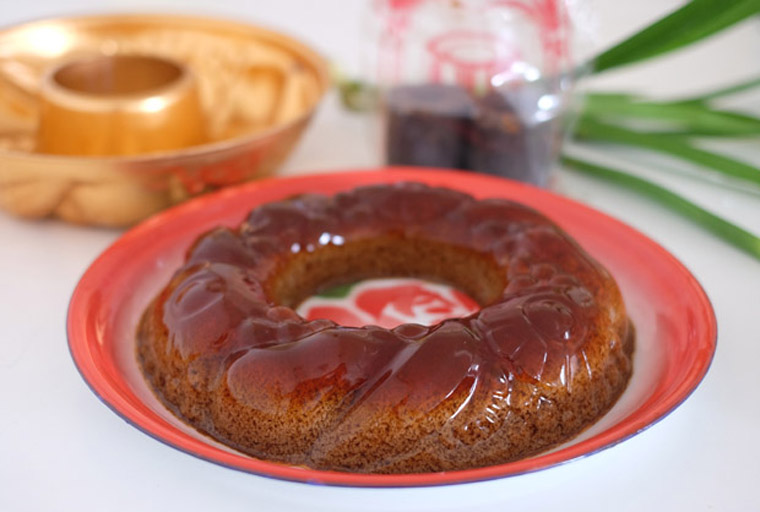
Pingback: Pandan leaves – New Malaysian Kitchen